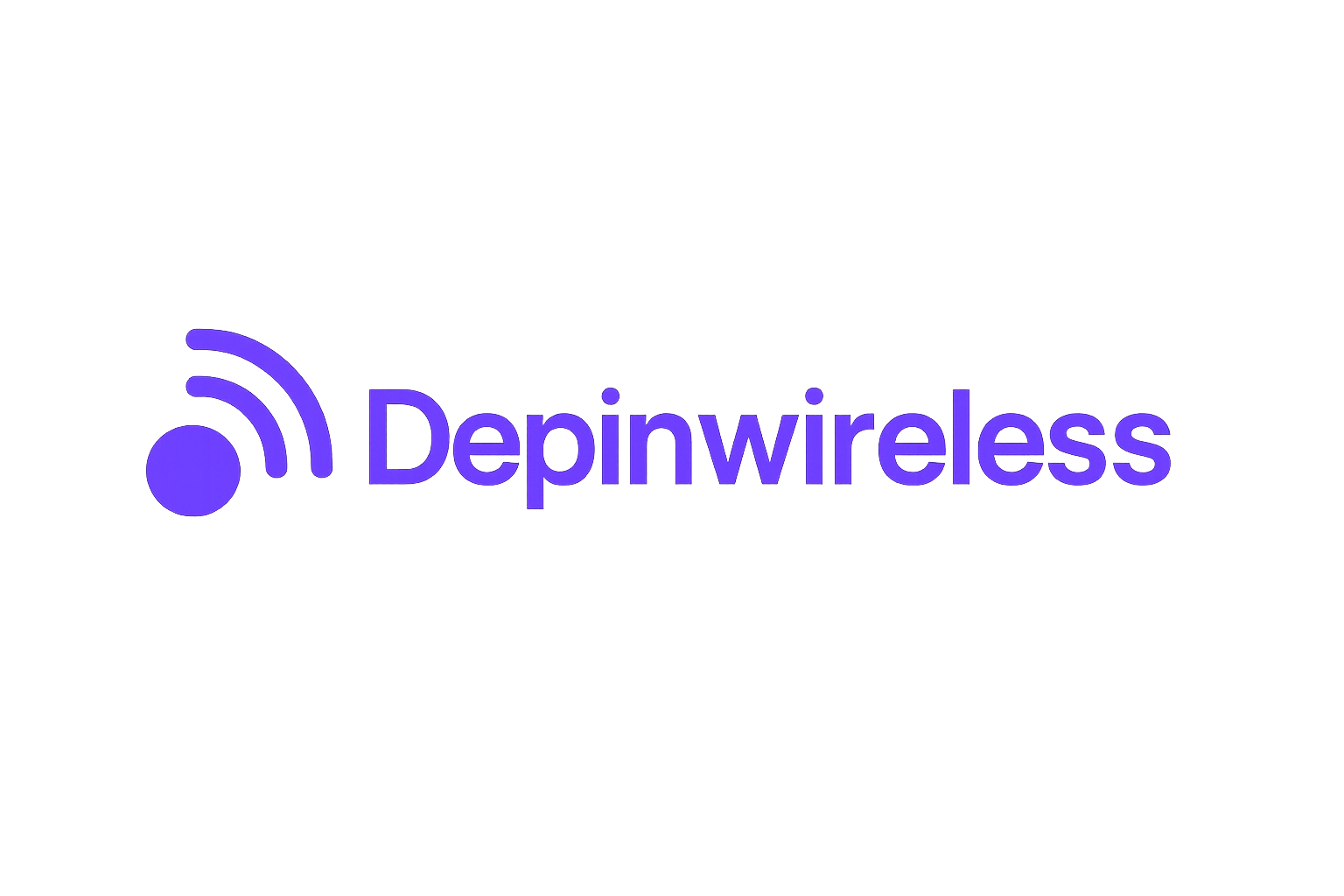
The U. S. wireless landscape is in the midst of a profound transformation, and at the heart of this shift lies the Helium Network. As of November 2025, Helium has not only expanded its technical footprint but also redefined how connectivity is delivered, monetized, and governed. Powered by its decentralized ethos and strategic carrier partnerships, Helium is rapidly becoming a cornerstone for both 5G expansion and IoT adoption across the country.
Carrier Partnerships: A New Era for Decentralized 5G
The biggest headline in 2025 is Helium’s integration with major telecom players. In April, AT and T opened its network to Helium’s decentralized infrastructure, instantly granting over 150 million U. S. subscribers access to Helium-powered coverage. This move was more than symbolic; it triggered a surge in data offloading as carriers leveraged community-run hotspots to extend their reach and reduce costs.
This partnership model has proven highly effective: by mid-2025, Helium’s network had facilitated over 2,721 TB of data offloading from major U. S. mobile carriers in Q2 alone, a staggering 138.5% quarter-over-quarter increase. The cumulative total now exceeds 5,520 TB since inception, highlighting just how integral decentralized wireless has become to mainstream telecom operations.
Explore detailed growth stats for Helium Network hotspots and data traffic here.
Hotspot Growth and IoT Momentum
The backbone of Helium’s network remains its expansive global hotspot deployment. By November 2025, there are more than 380,900 active hotspots worldwide, including over 98,000 mobile (5G) units and nearly 39,000 IoT-focused LoRaWAN devices. This density isn’t just impressive on paper, it translates directly into improved coverage for end users and robust support for a new generation of connected devices.
IoT adoption is particularly noteworthy: The proliferation of affordable sensors and smart devices is fueling demand for reliable low-power networks that traditional carriers struggle to provide at scale or cost-effectively. By leveraging community-owned infrastructure, Helium offers an elegant solution, one that’s seeing real traction among enterprises deploying everything from environmental monitors to asset trackers.
The HNT Token: Utility Meets Market Dynamics
No discussion of Helium Network’s ascent would be complete without addressing the role of its native token provides HNT. As of November 19,2025, HNT trades at $2.22, reflecting both ongoing platform growth and broader market volatility. The token remains central to incentivizing hotspot operators (who earn rewards for providing coverage) as well as facilitating network governance and resource allocation.
This year brought further innovation with the launch of Helium Plus, allowing businesses and public venues to monetize existing Wi-Fi infrastructure by joining the decentralized ecosystem, a move that could drive additional demand for HNT as network utility expands beyond traditional hotspot models.
Helium (HNT) Price Prediction 2026-2031
Forecast based on current market growth, adoption trends, and key partnerships powering decentralized wireless (DeWi) and IoT expansion.
| Year | Minimum Price (Bearish) | Average Price | Maximum Price (Bullish) | Year-over-Year % Change (Avg) | Market Scenario Insights |
|---|---|---|---|---|---|
| 2026 | $1.85 | $2.90 | $4.10 | +30.6% | Post-AT&T/Telefónica integration, network growth continues but subject to broader crypto market volatility. Increased adoption in IoT and 5G fuels demand, but regulatory risks may cap upside. |
| 2027 | $2.20 | $3.50 | $5.60 | +20.7% | Helium Plus and expanded carrier partnerships drive additional use cases. Growth in data offloading and hotspot deployment strengthens fundamentals. Competition from other DeWi projects may impact upside. |
| 2028 | $2.80 | $4.30 | $7.00 | +22.8% | Broader IoT/5G adoption in the US and Latin America; regulatory clarity emerges. Tokenomics adjustments could increase scarcity. Potential for major enterprise integrations. |
| 2029 | $3.50 | $5.10 | $8.20 | +18.6% | Helium achieves mainstream recognition as a DePIN leader. New use cases (smart cities, edge computing) emerge. Macro market cycles (possible bull run) enhance price potential. |
| 2030 | $3.10 | $4.60 | $9.40 | -9.8% | Market correction after rapid growth; some saturation in hotspot markets. Regulatory tightening or tech competition could introduce headwinds, but fundamentals remain strong. |
| 2031 | $2.80 | $4.20 | $8.80 | -8.7% | Maturity phase; steady utility growth but slower price appreciation. Ongoing competition and potential token inflation risks. Network remains a DeWi backbone but faces new entrants. |
Price Prediction Summary
Helium (HNT) is positioned for substantial growth through 2028-2029 driven by real-world adoption, high-profile partnerships (AT&T, Telefónica), and the launch of Helium Plus. However, as the network matures and competition intensifies, price appreciation may moderate. The forecast reflects both bullish and bearish scenarios, with average prices expected to rise through 2029 before stabilizing as the market matures.
Key Factors Affecting Helium Price
- Expansion of 5G and IoT use cases via Helium Network and carrier partnerships
- Network growth (active hotspots, user adoption, data offloading volumes)
- Potential regulatory challenges or favorable legislation
- Competition from other DeWi and DePIN projects
- Tokenomics changes (e.g., supply reductions or incentive adjustments)
- Macro crypto market cycles (bull/bear phases)
- Technological advancements (e.g., Helium Plus, integration with enterprise solutions)
Disclaimer: Cryptocurrency price predictions are speculative and based on current market analysis.
Actual prices may vary significantly due to market volatility, regulatory changes, and other factors.
Always do your own research before making investment decisions.
User Adoption: From Early Adopters to Mainstream Subscribers
The numbers tell a compelling story: Helium Mobile account signups soared by 94.1% in Q2 2025 alone, surpassing 311,200 subscribers. Initiatives like the $5 ‘Sprout’ Kids plan have broadened appeal beyond tech-savvy enthusiasts into everyday households seeking affordable connectivity options.
This surge isn’t just about cost savings; it signals growing trust in decentralized wireless as a viable alternative, or complement, to legacy carrier plans. With over one million daily users now relying on the network for everything from streaming video to connecting smart city sensors, it’s clear that DePIN wireless has moved from concept to critical infrastructure.
Helium’s ecosystem is thriving not only because of its technical prowess, but due to a fundamental shift in how wireless networks are built and owned. By empowering individuals, small businesses, and enterprises to deploy and manage their own infrastructure, Helium is creating a radically more resilient and adaptable wireless fabric. This people-powered model stands in stark contrast to the centralized, capital-intensive approach that has defined telecom for decades.

Beyond 2025: What’s Next for Decentralized Wireless?
The momentum behind Helium Network shows no signs of slowing as we look ahead. With the continued rollout of Helium Plus: which enables any business or public Wi-Fi operator to participate, expect to see exponential growth in coverage zones, especially in urban corridors and underserved rural areas. The network’s multi-protocol support (combining LoRaWAN for IoT and CBRS/5G for high-speed mobile) positions it uniquely to address a broad spectrum of connectivity needs.
Meanwhile, partnerships with giants like Telefónica (now reaching Movistar subscribers) hint at cross-border ambitions. The U. S. may be the epicenter today, but Helium’s model is inherently global, and as more carriers seek cost-effective solutions for network densification, decentralized approaches will become increasingly attractive worldwide.
Challenges Ahead: Sustainability and Competition
No growth story is without hurdles. As Helium scales, questions remain about long-term sustainability of rewards as HNT emission schedules evolve, competitive pressure from both legacy carriers and new DePIN entrants intensifies, and regulatory clarity continues to lag behind technological innovation. However, the project’s ability to iterate rapidly, evident in its swift onboarding of new partners and protocols, suggests adaptability is baked into its DNA.
Another challenge lies in user education: while early adopters understand the benefits of decentralized wireless, mainstream audiences still require clear messaging around privacy, reliability, and value proposition versus traditional plans.
Why Investors Are Watching Closely
The current $2.22 HNT price reflects both optimism about Helium’s expanding utility and caution regarding broader crypto market headwinds. Yet with over 380,900 active hotspots, surging data offload volumes, and deepening carrier alliances, including AT and amp;T’s historic integration, the fundamentals remain strong compared to many speculative DePIN projects.
For investors focused on blockchain telecom innovation or next-gen internet infrastructure plays, Helium offers a rare blend of real-world traction and upside optionality. The coming year will be pivotal as the network tests new monetization models like Helium Plus at scale, and as competitors scramble to replicate its community-driven momentum.
The Road Ahead: A New Connectivity Paradigm
If 2025 marks anything for U. S. wireless markets, it’s the arrival of decentralized infrastructure as an indispensable pillar of connectivity strategy, not just an experiment at the margins. The success of Helium Network serves as proof that when incentives align with community ownership and open standards, rapid network growth follows.
The next phase will likely see even closer collaboration between decentralized networks and established carriers, blurring old boundaries between incumbents and innovators. For those tracking the evolution of decentralized IoT deployment, or seeking deeper analysis on Helium’s active user growth trajectory, these are developments worth watching closely.
As blockchain-powered networks like Helium continue to reshape how Americans connect devices, and each other, the era of people-powered wireless has truly arrived.




